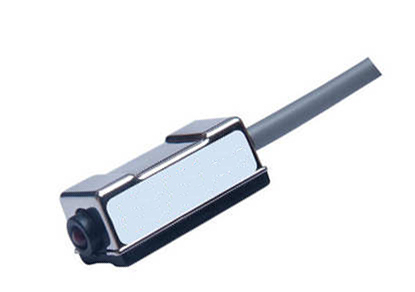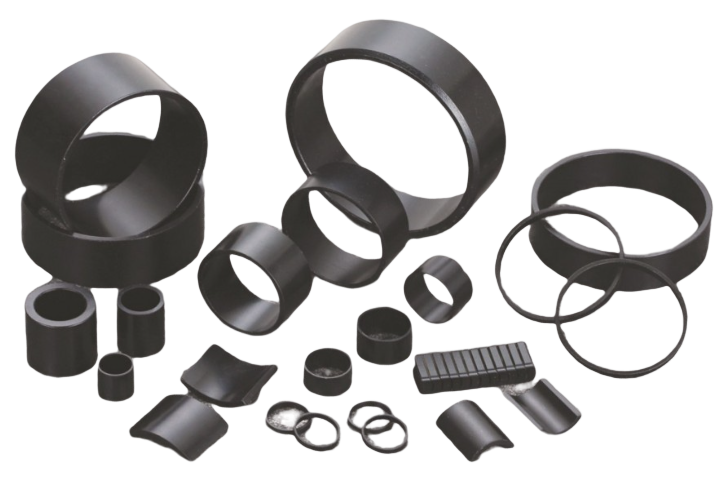Benefits of Bonded NdFeB Magnets in Magnetic Sensors for IoT
Applications of Bonded NdFeB Magnets in Magnetic Sensors for IoT
The Internet of Things (IoT) has revolutionized the way we live our lives. From smart homes to wearable technology, IoT devices have become an integral part of our daily lives. One of the key components of IoT devices is magnetic sensors, which are used to detect the presence or absence of a magnetic field. Bonded NdFeB magnets have emerged as a popular choice for magnetic sensors due to their high magnetic strength and low cost. In this article, we will explore the benefits of bonded NdFeB magnets in magnetic sensors for IoT.

Magnetic sensors are used to measure magnetic fields and are an essential component of many IoT devices. They are used in a variety of applications such as position detection, angle measurement, speed detection, and current sensing. Magnetic sensors can be categorized into two types: Hall Effect sensors and magnetoresistive sensors.
Hall Effect sensors are based on the Hall Effect, which is the production of a voltage difference across an electrical conductor when a magnetic field is applied perpendicular to the direction of current flow. Hall Effect sensors are commonly used in position detection, speed detection, and current sensing applications.
Magnetoresistive sensors are based on the phenomenon of magnetoresistance, which is the change in electrical resistance of a material when a magnetic field is applied. Magnetoresistive sensors are commonly used in angle measurement and position detection applications.
NdFeB magnets are a type of permanent magnet made from an alloy of neodymium, iron, and boron. They are the strongest type of permanent magnet and have a high resistance to demagnetization. NdFeB magnets are widely used in a variety of applications such as motors, generators, and speakers due to their high magnetic strength.
Bonded NdFeB magnets are made by mixing NdFeB powder with a polymer binder and then pressing the mixture into a mold. The molded magnet is then cured at high temperatures to form a solid magnet. Bonded NdFeB magnets have several advantages over traditional sintered NdFeB magnets, such as:
Lower cost: Bonded NdFeB magnets are cheaper to produce than sintered NdFeB magnets due to the lower processing temperatures and the ability to use less expensive raw materials.
Complex shapes: Bonded NdFeB magnets can be molded into complex shapes, which makes them ideal for use in magnetic sensors.
Higher resistance to corrosion: Bonded NdFeB magnets have a higher resistance to corrosion than sintered NdFeB magnets due to the polymer binder that protects the magnet from moisture and other environmental factors.
Bonded NdFeB magnets have several benefits when used in magnetic sensors for IoT devices, such as:
High magnetic strength: Bonded NdFeB magnets have a high magnetic strength, which makes them ideal for use in magnetic sensors that require precise measurements.
Low noise: Bonded NdFeB magnets have a low noise level, which means they produce less interference with other electronic components in the IoT device.
Small size: Bonded NdFeB magnets can be molded into small sizes, which makes them ideal for use in IoT devices that have limited space.
High sensitivity: Bonded NdFeB magnets have a high sensitivity to magnetic fields, which means they can detect even small changes in magnetic fields.
Low power consumption: Bonded NdFeB magnets require very little power to operate, which makes them ideal for use in IoT devices that are powered by batteries.
Bonded NdFeB magnets are used in a variety of magnetic sensors for IoT devices, such as:
Magnetic switches

NdFeB magnets have become a popular choice for magnetic switches due to their high magnetic strength and low cost. NdFeB magnets are made from an alloy of neodymium, iron, and boron, and are the strongest type of permanent magnet. They have a high resistance to demagnetization and are widely used in a variety of applications such as motors, generators, and speakers.
NdFeB magnets are used in magnetic switches due to their ability to detect even small changes in magnetic fields. When a magnetic field is applied to the NdFeB magnet, it causes the magnetic domains within the magnet to align in the direction of the magnetic field. This causes a change in the magnetic flux, which is detected by the magnetic switch.
Magnetic encoders

NdFeB magnets are used in magnetic encoders due to their ability to detect changes in magnetic fields. When a magnetic field is applied to the NdFeB magnet, it causes the magnetic domains within the magnet to align in the direction of the magnetic field. This causes a change in the magnetic flux, which is detected by the magnetic encoder.
Magnetic encoders that use NdFeB magnets have several advantages over other types of magnetic encoders. They have a high sensitivity to magnetic fields, which means they can detect even small changes in magnetic fields. They also have a low power consumption, which makes them ideal for use in battery-powered devices.
Magnetic field sensors

NdFeB magnets are used in magnetic field sensors due to their ability to detect changes in magnetic fields. When a magnetic field is applied to the NdFeB magnet, it causes the magnetic domains within the magnet to align in the direction of the magnetic field. This causes a change in the magnetic flux, which is detected by the magnetic field sensor.
One of the most common applications of NdFeB magnets in magnetic field sensors is in compasses. Compasses are used to determine the direction of the Earth's magnetic field and are commonly used in navigation systems. NdFeB magnets are used in compasses due to their high magnetic strength and ability to detect even small changes in magnetic fields. They are also used in other applications such as magnetometers, which are used to measure the strength of a magnetic field.
Another application of NdFeB magnets in magnetic field sensors is in magnetic imaging. Magnetic imaging is a technique used in medical imaging to produce images of the body's internal structures. NdFeB magnets are used in magnetic imaging due to their high magnetic strength and ability to produce a strong magnetic field. They are also used in other applications such as magnetic resonance imaging (MRI), which is a non-invasive medical imaging technique used to visualize internal structures of the body.
NdFeB magnets are also used in magnetic field sensors for industrial applications such as in the detection of metal objects. Metal detectors use magnetic fields to detect the presence of metal objects. NdFeB magnets are used in metal detectors due to their high magnetic strength and ability to detect even small changes in magnetic fields.
In conclusion, bonded NdFeB magnets have become a popular choice for magnetic sensors in IoT devices due to their high magnetic strength, low cost, and ability to be molded into complex shapes. They offer several benefits such as high sensitivity, low power consumption, and low noise level. Bonded NdFeB magnets are used in a variety of magnetic sensors for IoT devices such as magnetic switches, magnetic encoders, and magnetic field sensors. As the demand for IoT devices continues to grow, bonded NdFeB magnets will play a vital role in the development of magnetic sensors for these devices.
Contact: Cindy Wang
Phone: +86 19916725892
Tel: 0512-55128901
Email: [email protected]
Add: No.6 Huxiang Road, Kunshan development Zone, JiangsuShanghai Branch: No. 398 Guiyang Rd, Yangpu District, Shanghai, China